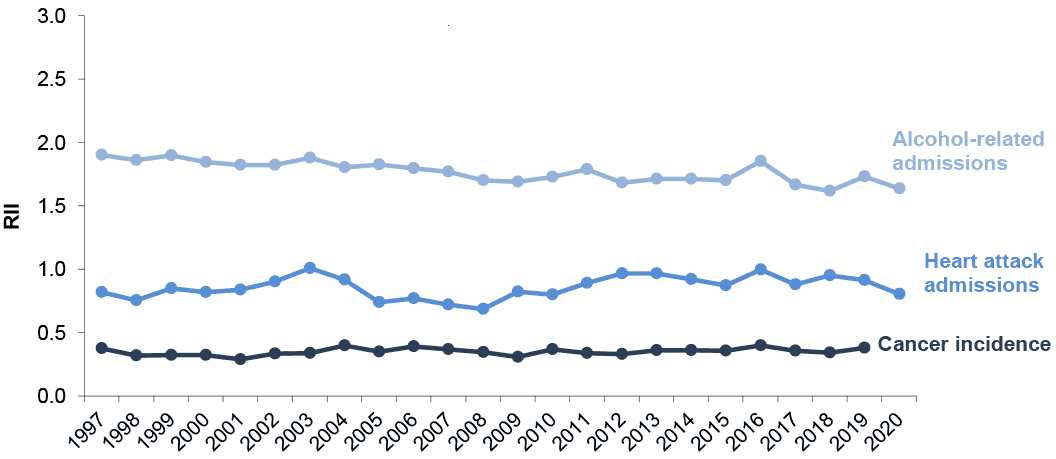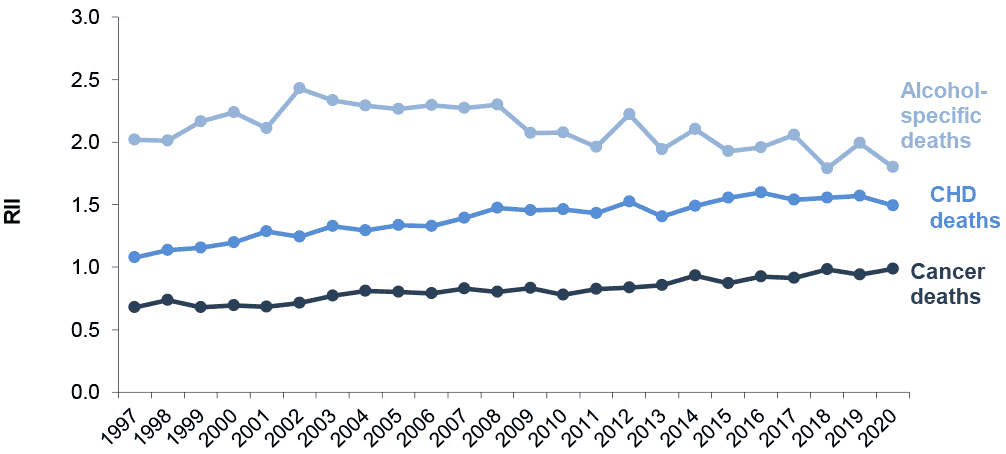Long-term monitoring of health inequalities: March 2022 report
Annual update of the long-term monitoring of health inequalities headline indicators.
Inequalities in morbidity and mortality indicators
The relative index of inequality (RII) indicates the extent to which health outcomes are worse in the most deprived areas compared to the average throughout Scotland. While comparisons of RII between indicators are possible, they should be made with some caution, in particular where absolute values are significantly higher or lower in the compared indicators or where the measurement scale differs.
The following charts group indicators in this report into broadly comparable categories: the first shows hospital admissions and incidence of conditions for people belonging to the under 75 age group; while the second shows mortality rates in the 45-74 age group for three causes of death.
Although relative inequalities in heart attack hospital admissions had been increasing in recent years, inequalities have remained highest in alcohol-related admissions throughout the period covered by this report. Inequalities in cancer incidence have remained relatively stable.

1. Cancer incidence data is only available up to 2019
Relative inequalities in CHD deaths among adults aged 45-74 have increased over the long term. Relative inequalities for alcohol-specific deaths have shown more year on year fluctuation over the same period and are currently lower than at the start of the time series (2.02 vs 1.80).
Although RII in cancer deaths has increased slightly over the longer term, inequalities remain highest in alcohol-specific and coronary heart disease deaths.

Contact
Email: morag.shepherd@gov.scot
There is a problem
Thanks for your feedback